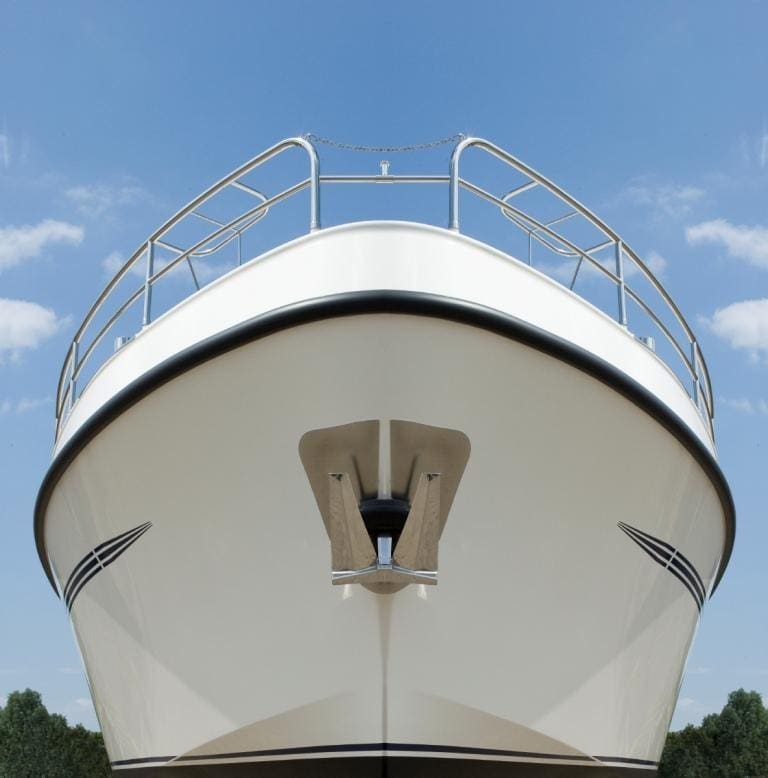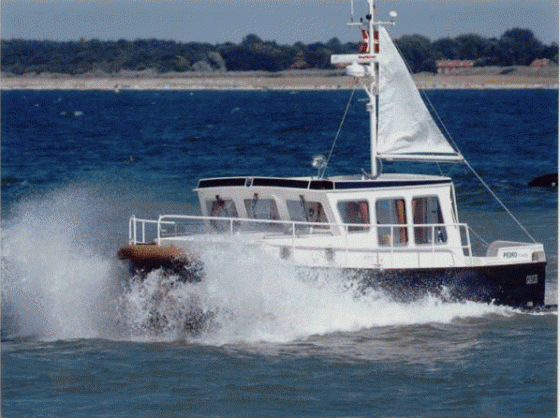Ideal sailing characteristics
Is there one ideal shape that provides the best sailing characteristics? In short, not really. But, one can aim for the best possible hull shape based on the vessel’s intended use. This important design aspect has been thoroughly investigated for the models from Pedro-Boat.
The shape of the hull is not only determined by its function, but also by various hydrodynamic aspects. Attempts are made to minimize the resistance in flatwater, but also during swells. At low speeds, this is mainly frictional resistance, but at higher speeds, wave drag is greater. The hull shape also affects seakeeping and manoeuvrability.
The optimal hull shape for a sailing yacht is different than for a motor yacht. Because we assume you are interested in the hull shape of steel motor yachts, we limit our explanation to this type of vessel.
To ensure a steel motor yacht has good sailing characteristics, a number of important features must be considered.
Hull shape
The most common hull shapes for steel displacement motor yachts are round bilge and (multi)kink bilge.
The curve of a round bilge hull allows the vessel to lie very naturally in the water. The lateral swing is slightly longer than in a hard kinked bilge, but it is very predictable and the final stability (the maximum tilt the ship can undergo without capsizing) is high. Building a round bilge is very labour intensive and that translates to very high purchase prices. It is mainly captains that often sail on rough seas that opt for a round bilge.
Many boatyards, including Pedro-Boat, choose instead for a chined hull. The advantages of this hull shape include a large initial stability and therefore more comfort and a small vessel depth.


Keel
A good keel is important for proper directional stability. A long keel provides more directional stability than a short keel which means it minimises the leeway movement of the vessel (wind drift) and ensures straight sailing. Be sure to pay attention to the position of the propeller as well. In a well-designed vessel, the propeller is positioned directly behind the keel to protect it from damage caused by dirt and debris since the keel redirects these around the propeller. And of course the propeller is also protected to a certain extent in shallow water.
Ascending stern
Space inside the vessel is very important for a pleasure yacht. Of course, you want a spacious aft cabin with lots of storage and living space. If only this aspect is taken into consideration, then a square stern provides the most space. However, the disadvantage of a square stern is that it has an extremely negative effect on the sailing characteristics. It is important that the bottom of the vessel slopes towards the stern to allow the water to find its way to the propeller and rudder and prevents squatting. All Pedro models have been designed this way. It also has a positive effect on the vessel’s fuel consumption. When making your purchase decision, be sure to take this into consideration.
The bow shape
The bow shape is also important for handling. A ‘full’ bow creates a lot of space below deck which is important for a pleasure boat, but it also creates greater resistance in the water. A v-bow produces less resistance and has better directional stability, but is does not provide as much lift from a wave trough. For the Levanto series, Pedro chose for a so-called flared bow which has a v-shape below the waterline and a sweeping bow shape above the waterline, which provides upward lift as well as helps the vessel rise out of a wave trough. Another advantage is that the cabin space above the waterline can still be utilised optimally. This graceful flared bow is seen on many classic motor yachts and fits well with the Levanto design. To build such a complicated bow requires not only knowledge, but also skill.


